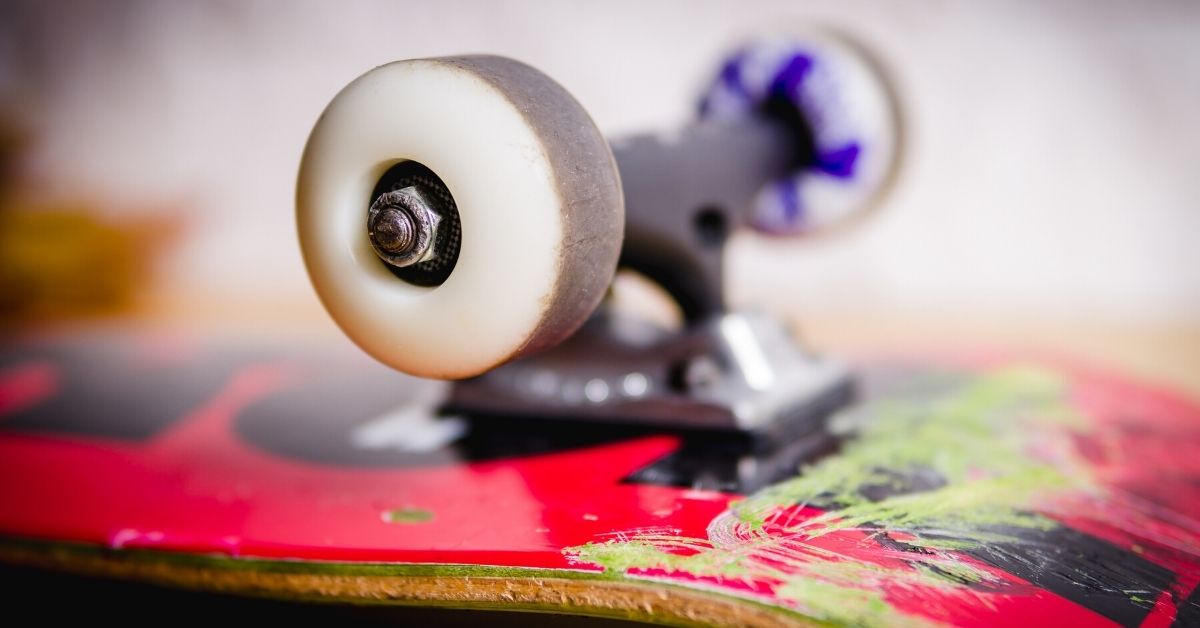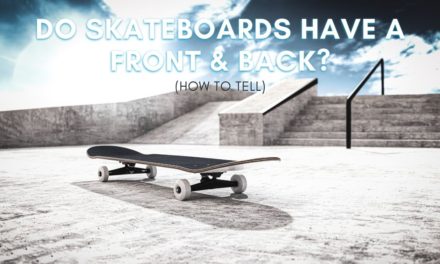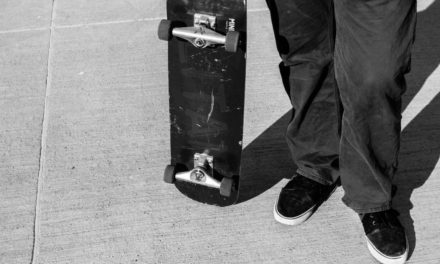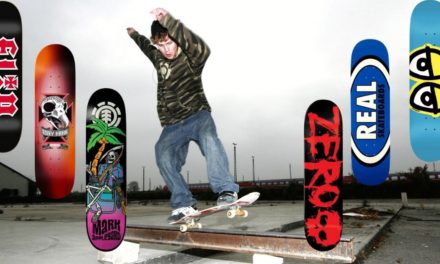Whether you got a new set of wheels or are building a new skateboard, getting the right wheel tightness ensures your skateboard is responsive without sacrificing speed. Although many beginner skaters assume that tightening your wheel as much as possible is the best solution, this actually creates more problems. To help ensure your wheels spin fast and smoothly, here’s how to get the right wheel tightness for your skateboard.
Skateboard wheels should spin freely without having much room to wiggle side to side. For wheels without bearing spacers, tighten the wheel until the axle nut is close to but not touching the bearing. For wheels with bearing spacers, tighten until the axle nut is snug while the wheel spins freely.
If you aren’t sure whether you have bearing spacers or not, don’t worry, I’ll break down what they are later in this post. I’ll also break down some tips for tuning in your wheel tightness just right to ensure your skateboard rolls fast, smooth, and safely.
Let’s get started!
How Tight Should Skateboard Wheels Be?
As I mentioned previously, the tightness of your wheels will depend on whether you are using bearing spacers or not. Bearing spacers are metal tubes that sit in the middle of your wheel, separating each bearing. These are most commonly used on longboards or cruiser boards since they help reduce vibration while rolling at high speeds. They also make for a more responsive skateboard while doing powerslides since the wheels are far tighter.
If you aren’t sure what a bearing spacer is, below is an infographic highlighting how it sits in relation to your wheel (#6).
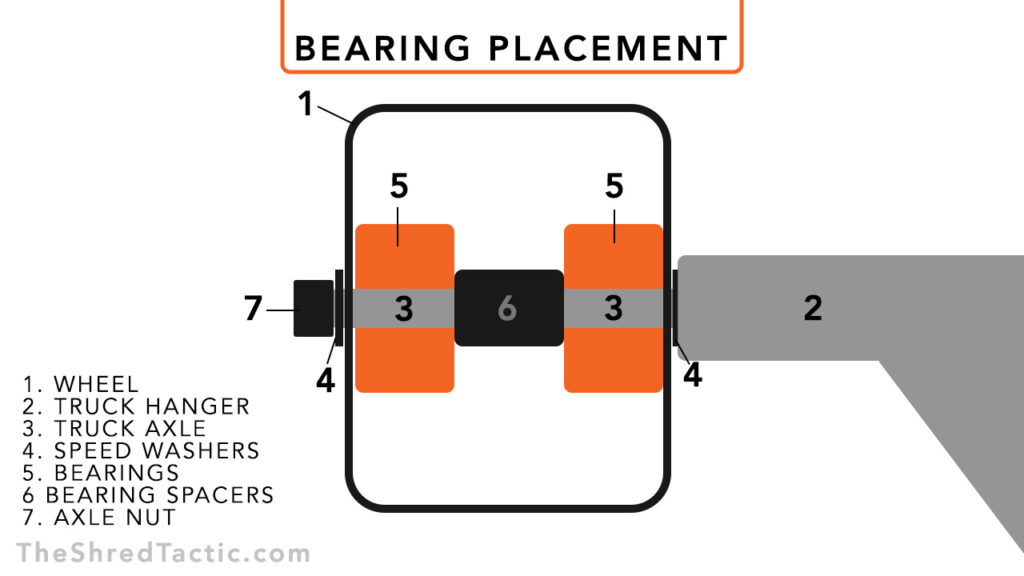
Spacers are not usually built into skateboard wheels; therefore, it’s safe to assume you don’t have them unless you added a set yourself when installing your bearings.
So how tight should your wheels be if you are versus are not using bearing spacers?
– Without Spacers
Without bearing spacers, your wheel should be tight enough to spin freely but still have a small amount of room to wiggle side to side. Tightening the axle nut until it’s just a millimeter or two from the bearing ensures the wheel can spin freely without over-tightening and restricting its movements.
You know you’re in the sweet spot for tightness when you wiggle the wheel to make a “clicking” sound without it moving side to side very much.
The risk of over-tightening your wheel without spacers is that it will force your bearings together against the inner wheel and make it harder or impossible for them to spin. In extreme cases, over-tightening can damage or even crush your bearing races by squishing the bearings between the axle nut and the truck hanger.
– With Spacers
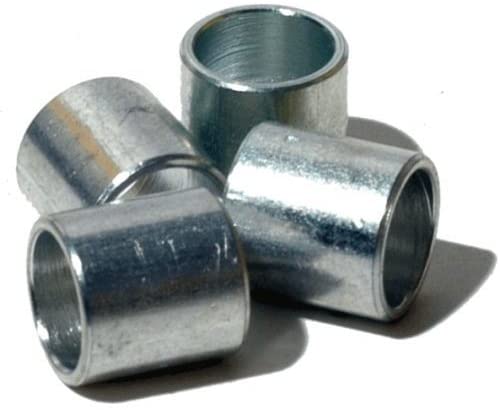
When you have bearing spacers placed between your bearings, you can get away with a tighter wheel. This is because the spacer lines up with the race of your bearing and takes on the load as you tighten. Rather than the bearing balls becoming restricted against the inner part of the wheel, the pressure builds on the race while leaving the bearing balls free to spin.
This means that you can tighten your wheel until the axle nut is snug, but take care not to go overboard. Once you start feeling the bolt tighten against the bearing, it’s more than enough to secure the wheel.
There’s no need to leave any space between the bearing and the axle nut since you can’t accidentally squish your bearings together. With that said, make sure to have a speed washer on either side of your wheel to protect the bearings from the axle nut and the hanger while they spin.
Speed washers are included with all skateboard trucks, so they’re likely already sitting on your axle. Just double-check before cranking down on your wheel!
How To Know If Your Wheels Are Too Tight
You can easily tell if your skateboard wheels are too tight by trying to spin them. If they can’t make a full revolution, it’s a clear sign your wheels are seriously overtightened and should be loosened.
In less obvious situations, your wheels may spin a few full revolutions but seem to come to a stop abruptly. This means your axle nut is slightly too tight and is still restricting how long your wheel can spin. By loosening the axle nut by a small amount, your wheel should be able to rotate freely, with a gradual slow down.
A quarter or half turn of the axle nut will make a big difference in many cases. Just remember to check all four of your wheels, as it’s not uncommon for one wheel to be accidentally more tight than the others. The goal should be for all your wheels to spin freely, with as little side-to-side movement as possible.
How Long Should Your Skateboard Wheels Spin For?
It’s hard to give an exact number of seconds a wheel should spin to test tightness. However, if your wheel cannot spin for more than 10-15 seconds after giving it a good spin, your wheels are likely too tight.
With that said, different skateboard bearings can play a role in how long your wheels spin, along with the lubrication of the bearings.
If your wheels appear to be the right tightness but still aren’t spinning very long, it’s likely time to clean and lubricate your bearings. This is something you should try to do every couple of months to ensure your skateboard rolls as smoothly as possible. I break down how to do this along with six other ways to help make your skateboard faster here.
Tight Wheels VS Loose Wheels
Whether you are using bearing spacers or not, wheel tightness can affect the performance of your skateboard. Since you can only tighten your wheel so much without a spacer, let’s consider that a “loose” wheel since it has side-to-side movement. Meanwhile, a bearing spacer allows you to keep the axle nut snug and eliminate any side-to-side movement of your wheel making it “tight”.
With a tighter wheel (aka with bearing spacers), the advantage primarily comes to responsiveness in powerslides. Powerslides are the movement of kicking out your back wheels and sliding your board horizontally across the ground. This is fun when cruising around at high speeds but is especially common for longboarders. With a tight wheel, there’s no room for it to move; therefore, your weight is more effectively transferred into the wheel with immediate feedback.
Compared to a loose wheel, the wheel must shift against the axle nut or the hanger before the board can slide. This reduces how snappy the response of your board is when you try to slide it around.
The second difference between loose and tight wheels is the vibration you feel while riding. Although the difference isn’t huge, a loose wheel can transfer more vibration as the wheel shifts side to side on your axle. Meanwhile, a tight wheel won’t have excess vibration since it’s snug between the axle nut and the hanger.
For most skateboard tricks, riding bowls, or cruising around town, having loose or tight wheels won’t make a massive difference. However, having tighter wheels is a better option if you’re focused on going as fast as possible or love doing powerslides.
How To Adjust Wheel Tightness
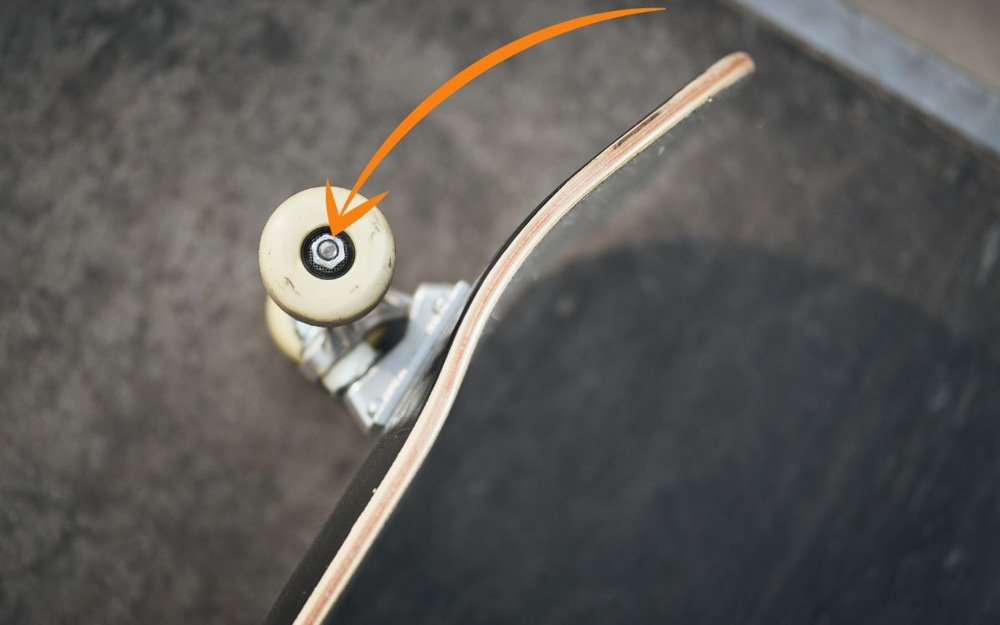
Adjusting the tightness of your skateboard wheels is simple with the help of a skate tool or a 1/2″ wrench. Placing the socket or wrench over the axle nut, rotate clockwise to tighten and counterclockwise to loosen. Once the axle nut is close to the bearing, start working in small turns of the socket while spinning the wheel after each adjustment.
I like to continue to tighten the axle nut until the wheel’s movements become restricted, then slightly loosen from there. This is an easy way to get your wheel as tight as possible without restricting its movements!
Now go over all of the remaining wheels and adjust the tightness accordingly. Since it’s nearly impossible to have “exactly” the same tightness for every wheel, try to get a similar tightness using your best judgment.
With properly tightened skateboard wheels, you can ensure your wheels won’t come flying off by accident while also ensuring your wheels can roll fast and freely. To help you learn more about making your skateboard faster after your wheels are tightened, check out this article on how to make your wheels roll faster!
Happy Shredding!
Brendan 🙂

